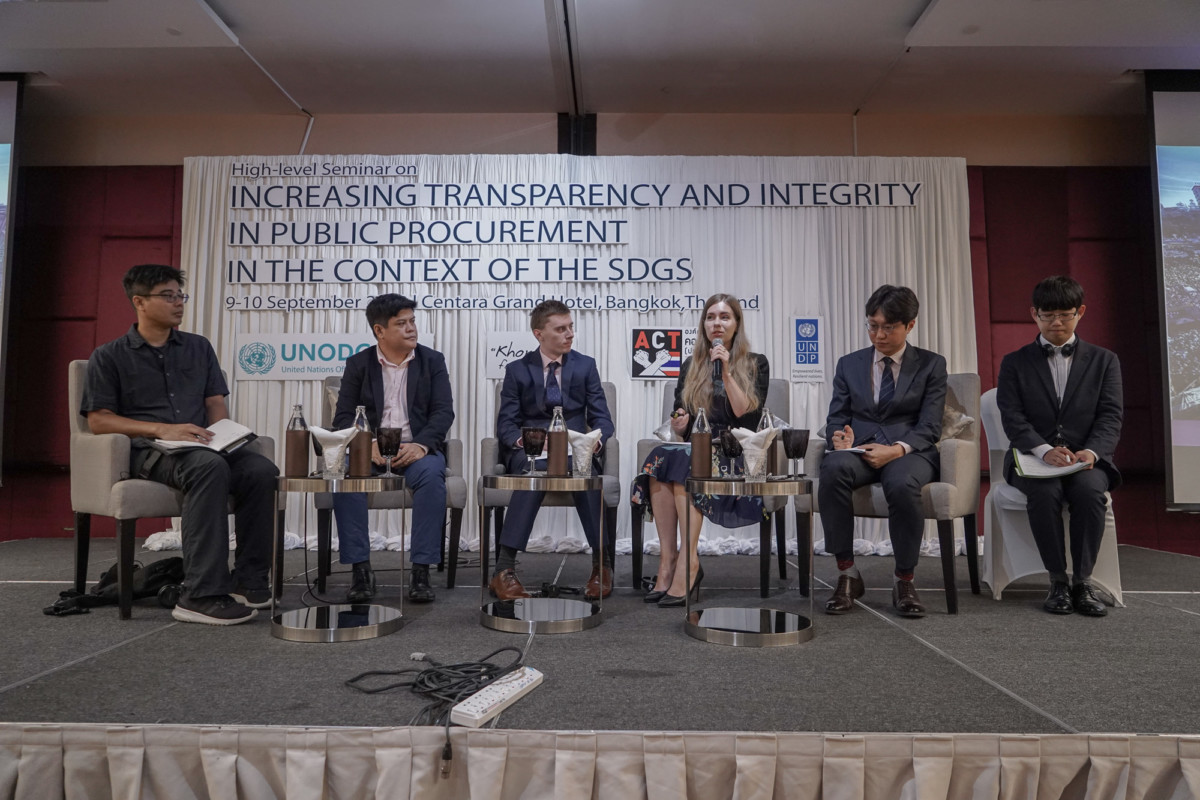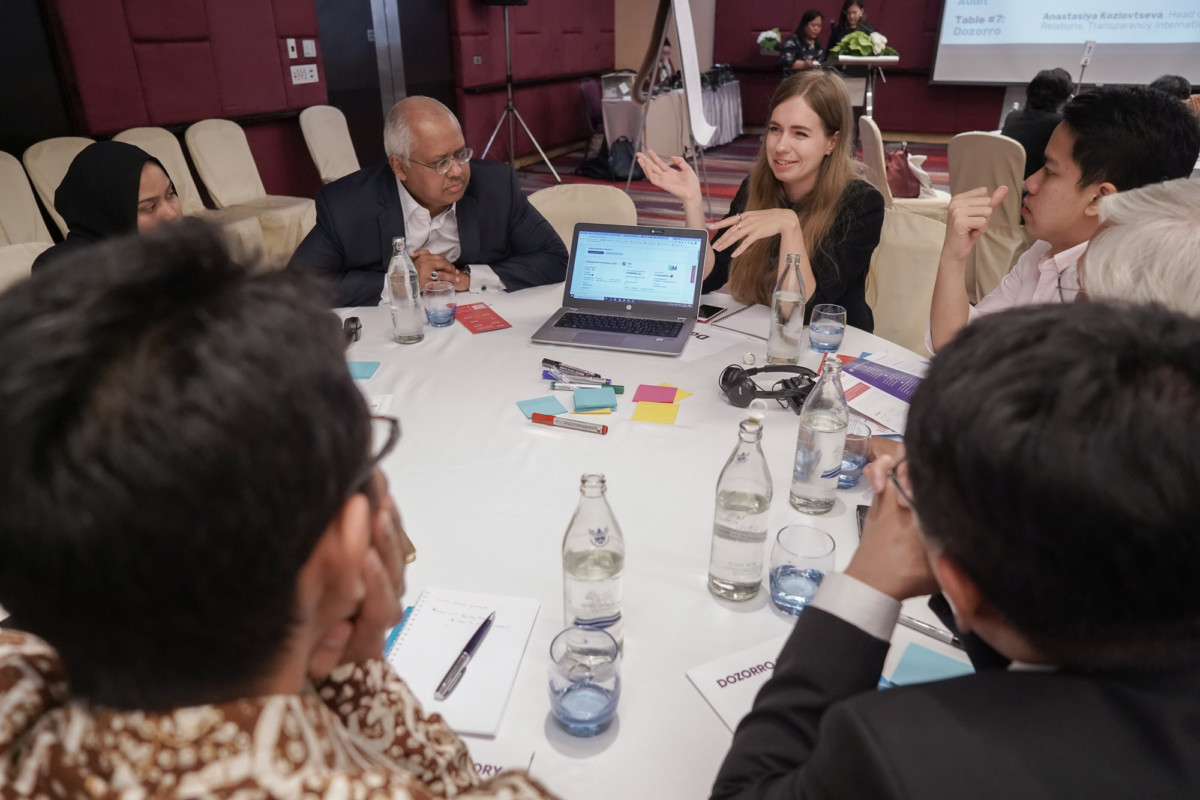Last week, I represented Ukraine at a seminar on transparency and integrity of public procurement in Thailand. The Ukrainian experience that I shared seemed to be beyond the wildest dreams of seminar participants in Bangkok.
It is hardly surprising given South Asia and Southeastern Asia remain the regions with the lowest level of development in the context of publication of procurement plans and tender documents. And things like the DOZORRO community seem entirely impossible.
Ukraine surprises the world with public procurement innovations
Of course, in Ukraine we monitor procurement much better than they do in Asian countries. The public is very active in our country, and information on tenders is available to anyone thanks to the ProZorro system which TI Ukraine used to administer and subsequently transferred to the government.
Tinder for tender, 40 risk indicators and machine learning of DOZORRO impressed just about everyone. The thing is that out of two tenders, procurement experts select the one which they believe to be more risk-prone or have possible violations. Thus, artificial intelligence should learn how to assess different risk combinations and the weight of each factor. Eventually, the monitoring produces the most suspicious tenders, which are manually analyzed by experts. It helps to identify problematic procurement among thousands of tenders on ProZorro much faster. The system works especially well with conspiracy among tender participants; we are able to identify them almost 300% better than before.
At the seminar, representatives of Indonesia and the Philippines asked about our experience more than anyone else, since they want to apply it in their countries.
It is hardly surprising given South Asia and Southeastern Asia remain the regions with the lowest level of development in the context of publication of procurement plans and tender documents. And things like the DOZORRO community seem entirely impossible.
How public procurement works in Asian countries
Among over a hundred seminar participants, the majority are public procurement experts who work in public authorities, anti-corruption agencies and audit bureaus. Representatives of the civil society and key business representatives of ASEAN were also invited.
Interestingly, in some countries payments are tied to electronic procurement platforms, that is, payment can only go through after a quality tender. And announcement of a tender is only available if this tender is included in the previously published budget plan.
Thailand
In Thailand, they managed to save 90 billion baht of taxpayers’ money (about USD 2.9 billion) on over 100 tenders thanks to Integrity Pacts of the global movement Transparency International. It is one of corruption prevention mechanisms. An integrity pact is a rule for when the procurement amount exceeds 1 billion baht.
Integrity pacts can be actual documents signed by procuring entities and tender participants or the overall principle of public contracts in the country. They have been used since 1990s in 15 countries worldwide. Public procurement is becoming more transparent, and public observers oversee this process.
Thai authorities are developing the system of electronic public procurement (e-GP). On the website http://www.gprocurement.go.th there is information for suppliers, tender announcements and bidding results. “Beginners” can register for procurement online courses and obtain a certificate. However, only companies included in a special register can participate in tenders. Thai officials are also planning to launch the website https://govspending.data.go.th, which would collect data on public procurement and information from the Budget Bureau, the Electronic State Agency, the Office of the Commission for Corruption Counteraction in the Public Sector.
Interestingly, the new legislation suggests budget funding to procurement controllers representing civil society in the form of percentage from the procurement cost.
Indonesia
In Indonesia, they started creating an electronic procurement system back in 2008. The sphere of procurement is governed by the National Agency for Public Procurement subordinate to the President. Over 500 agency employees account for national and local procurement and develop the system of electronic procurement, including, among other things, e-planning, e-tenders and e-monitoring.
For instance, on the website https://sirup.lkpp.go.id you can find out that in February 2020, the local authorities of Depok city are planning to buy uniforms for the agricultural department for the amount of 4.9 million rupees (about UAH 8,000). E-tenders are available on a different website: https://www.lpse.kemenkeu.go.id. The recent tenders include, for instance, the purchase of a car for Ministry of Social Policy PR managers for 580 billion rupees.
Indonesia and the Philippines want to apply our experience in their countries.
Philippines
Last year, the Philippines started modernizing their e-procurement system, resolving technical issues around the portal. Since 2018, tenders with the expected value of over 500 million peso (about UAH 237 million) have been advertized in the media. Besides, Filipinos are planning to organize a platform for exchange of experience among procuring entities, suppliers and consultants, and organize training for them. In 2019, digital signatures on procurement documents should finally be implemented.
Cambodia
In Cambodia, they have only recently adopted the Strategy for Reforming the Public Procurement System, so big changes are still ahead. The government is trying to be more transparent and brags that the law, procurement procedures, the annual plan and invitations to participate in the bidding have already been published on the website of the Ministry of Economy and Finance. They also say that they are planning to ensure fair competition among bidding participants.
Why transparent public procurement matters for sustainable development
At the seminar, we talked about increasing procurement transparency in the context of UN Sustainable Development Goals. At the UN Summit, 17 sustainable development goals for 2030 were approved, including health and well-being, industry, innovation and infrastructure, sustainable development of cities and communities. The success of their implementation often depends on the quality of public services, which includes public procurement.
TI Ukraine strives to ensure equal rules for all stakeholders of the procurement system: procuring entities, companies and civil society. Members of the DOZORRO community control procurement and report violations to competent authorities. The website dozorro.org enables leaving feedback about a tender. Thus, everyone can improve the situation in public procurement.
The seminar on increasing transparency and integrity of public procurement in the context of UN Sustainable Development Goals was jointly organized by UNDP, UNODC, Anti-Corruption Organization of Thailand (ACT) and Khondai Foundation.
In Thailand, they managed to save 90 billion baht of taxpayers' money (about USD 2.9 billion) on over 100 tenders thanks to Integrity Pacts of the global movement Transparency International.









